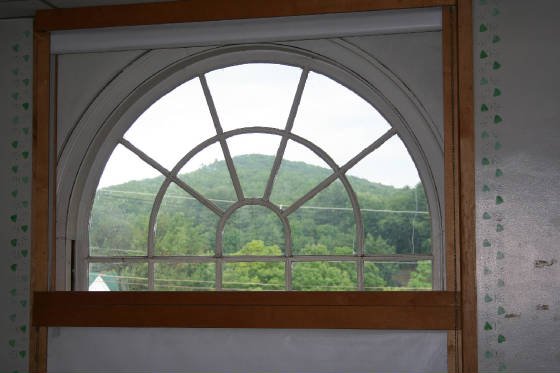
I grew up in the tiny southern Maryland village of Solomons, and attended Solomons Elementary School. After college, I moved to New England. Twenty years ago, I returned to my home town for a high school reunion and discovered that my little elementary school had been converted to the Calvert Marine Museum. When I walked in, I was stunned. Just about everything had changed, but with one notable exception that I wasn’t prepared for. It still smelled like the school.
I had completely forgotten about that smell. When I bought my ticket, I mentioned it to the clerk. She said: “We get visitors like you all the time, people who went to this school. They always mention that smell. I don’t know where it comes from, but I guess it will never go away.”
Readers of this website may be aware that I visit Springfield, Vermont frequently. Recently I took about 100 photos of the former Fellows Gear Shaper mill, mostly the old buildings at the southern end, many of which are slated to be demolished by a company that is planning to redevelop the mill.
This prompted an email from Kelly Stettner, a Springfield resident, who asked me to take some photos of the interior of the Park Street School, which was built in 1895, and had an addition built in 1929. The town has elected to close the school in two years, and expand the other two elementary schools. Ms. Stettner is hoping that I can capture and preserve some of the memories, before possible reuse and remodeling of the building occurs. I was happy to give it a try. So I arranged a visit right after the school year ended, and was told I could roam the hallways and classrooms at my leisure.
The morning I drove up, it was gloomy, the weatherman on the radio warning of severe thunderstorms all day. Former mill towns like Springfield look good on days like these. The old wood and brick facades take on richer colors when they are wet, and the sun isn’t around to put a coat of gloss on them. The rain makes the river run harder and noisier. Sometimes gloomy is beautiful.
I entered the school at 9:00, and signed in at the office. The secretary offered a map, but I declined. “I’d rather get lost,” I said. I took a left and headed down the hallway. I could tell immediately that a large format “view camera” was ideal for this project, not the Canon Digital 35mm SLR that I was carrying. But this was an exploratory visit, and I don’t own one of those expensive cameras anyway.
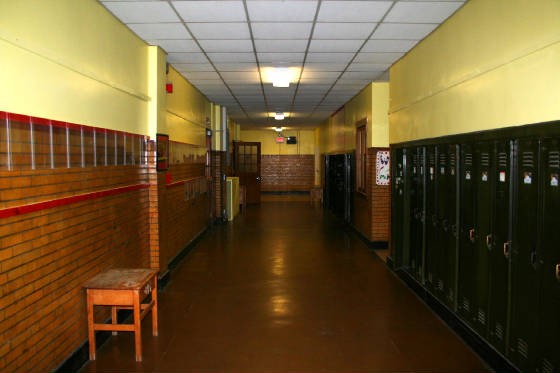
The maze-like hallways, claustrophobic classrooms and numerous staircases made it almost impossible to photograph anything from a suitable distance. And it was too dark in there: no sun, or no windows, and inadequate lighting. There were no signs of school activity – no children, no teachers, almost no artwork left on the walls – and the maintenance workers had shoved desks against the windows and left floor polishers, vacuums and stepladders all over the place. I should have expected that.
I sure got lost in a hurry – down corriders, around corners, through doors, up stairs, and back down – it was mindboggling. I often inadvertently ended up back where I started, once three times in a row. It seemed like I encountered more exits than entrances. I should have taken that map.
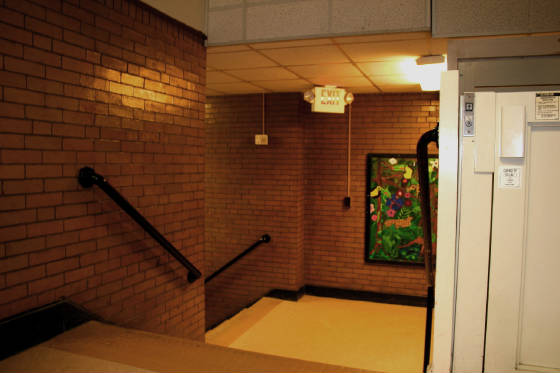
At one point, it was raining so hard that I couldn’t even see out of the windows. I imagined the school sliding into the raging Black River. I hurried past a small hallway, and the sound of the rain suddenly got much louder. So I followed the sound and found myself in a spooky balcony in the gym. The rain pounded on the roof and echoed with such noisy force that I thought I might go deaf. I grabbed a seat and soaked it up for a good 10 minutes. It was the most thrilling sound I had ever heard.
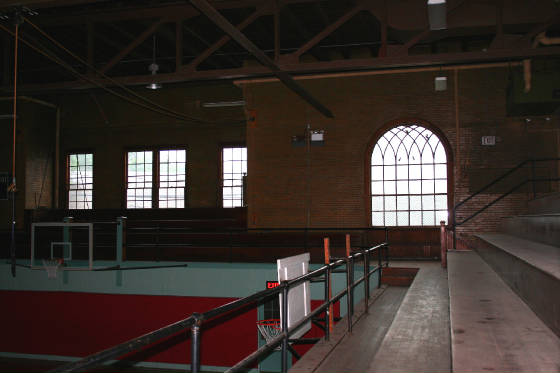
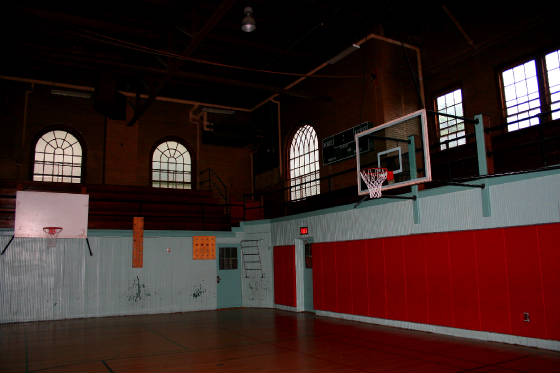
While the eerie soundtrack played, I started thinking about what I was trying to do. How could I, with no roots in Springfield, have the audacity to think that I could capture the images that fill the memories of the thousands who have passed through this building in the last 100 years? How would I know what they cared about? I might wind up taking artful photos of the woodwork, only to learn that they were dying to get one more look at the funky bathrooms where kids gossiped or sneaked a smoke.

So how do we find out what’s important? Has the town considered holding several forums at the school, where former students (especially the older ones) are invited to reminisce? And why not televise the forums on the local access channel? People could be encouraged to write down their memories and send them to the Springfield Town Library, where volunteers could organize them and put them in scrapbooks, or file them away for safe keeping.
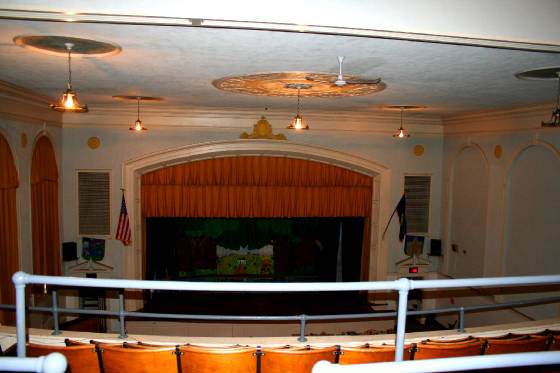
Armed with that information and some appropriate camera equipment, and on a few days during the school year, a good photographer (I’ll pass on this one) might be able to preserve images of the things that matter most, even if they include stuff like a clunky old water fountain or steps worn away by a 100 years of scruffy shoes.
Finally, the rain wound down to just a roar, and I popped into the office to tell the secretary about the sound spectacular. “I wish there was some way to capture those sounds on my camera,” I said. She replied, “I wish your camera could capture the way the school smells. Everyone remembers that.”
